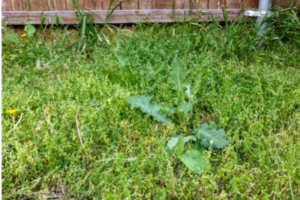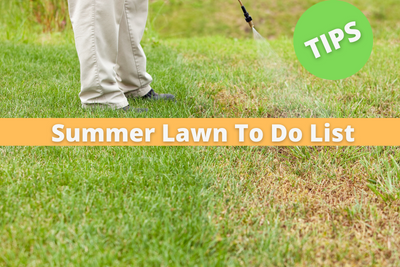The hot and dry summer months tempt even the most diehard lawn and garden enthusiasts to opt for the air-conditioned indoors, but your landscape needs disciplined care to survive and thrive in these dog days.
While warm-season lawns are taking advantage of the heat — it doesn’t take as much effort to help grass grow into a thick and lush shield against weeds — evergreen grasses may be burning out and requires extra attention to make it through summer stress.
Here is a summer To Do list:
 Let’s start with irrigation, since it so important this time of year. Depending on where you live, rainfall can be sporadic or even non-existent. Pay close attention to rain totals and keep your sprinklers in good working order. Evergreen lawns will most likely be showing signs of stress beginning in June. Irrigate consistently to help the grass cope with the warm temperatures. Even a short period of drought can turn blade stems to brown. Absent of any significant rainfall, apply at least one inch of water per week.
Let’s start with irrigation, since it so important this time of year. Depending on where you live, rainfall can be sporadic or even non-existent. Pay close attention to rain totals and keep your sprinklers in good working order. Evergreen lawns will most likely be showing signs of stress beginning in June. Irrigate consistently to help the grass cope with the warm temperatures. Even a short period of drought can turn blade stems to brown. Absent of any significant rainfall, apply at least one inch of water per week.
Mowing your lawn at the proper height at the right time is the key to a healthy lawn in summer. And mow it sooner rather than later in any given week.
Some homeowners have a mistaken impression that they are protecting their grass by not mowing. The opposite is true. Grass blades adjust their growth pattern to the frequency and height of a cut. Altering either one during the summer heat and humidity can shock the lawn and cause it to thin. Continue to mow consistently and at the correct height; avoid reducing the height of your grass blades by more than one-third.
In terms of your comfort, mow in the early evening when the heat and humidity tend to be lowest of the day.
The next big thing to watch out for during the summer is the proliferation of weeds. They rob your soil of both nutrients and water, which is why  summer is when we tend to see weak, thinning lawns.
summer is when we tend to see weak, thinning lawns.
That pre-emergent weed control you applied in late winter is no longer effective. As soon as you see them, spray pesky broadleaf and grassy weeds with a post-emergent weed control product. Keep in mind that sprays generally are most effective when daytime temperatures are near 80 degrees.
If your lawn is weed-free, do nothing until fall. Otherwise, you can drop down a granular pre-emergent control product without fertilizer to keep a handle on annual and perennial weeds.
 As always, check the label to make sure that any product you use is approved for use on your specific type of grass.
As always, check the label to make sure that any product you use is approved for use on your specific type of grass.
Slow-release fertilizer that was applied to warm-season Bermuda and St. Augustine lawns in the spring will still be effective into early July, when you may want to consider another fertilizer application. Do not fertilize cool-season grasses, as this will only add unnecessary stress in the scorching summer heat.
It is too late in the year to plant an evergreen lawn, but if you choose to plant warm-season grass lawns such as Bermuda in summer, do it as early as you can so that they have more time in ideal soil temperatures to establish roots quickly. Make sure you water new seed during the heat of summer.
Keep in mind that fescue lawns are not good at tolerating foot traffic during summer heat. Be on the look for bare spots after backyard parties and barbecues. Target specific areas for watering where appropriate.
As always, your local independent lawncare dealer and landscape experts are ready to answer any questions you have and help you through even the most troubling problem that crops up during the summer months. To find a dealer near you, click here.

